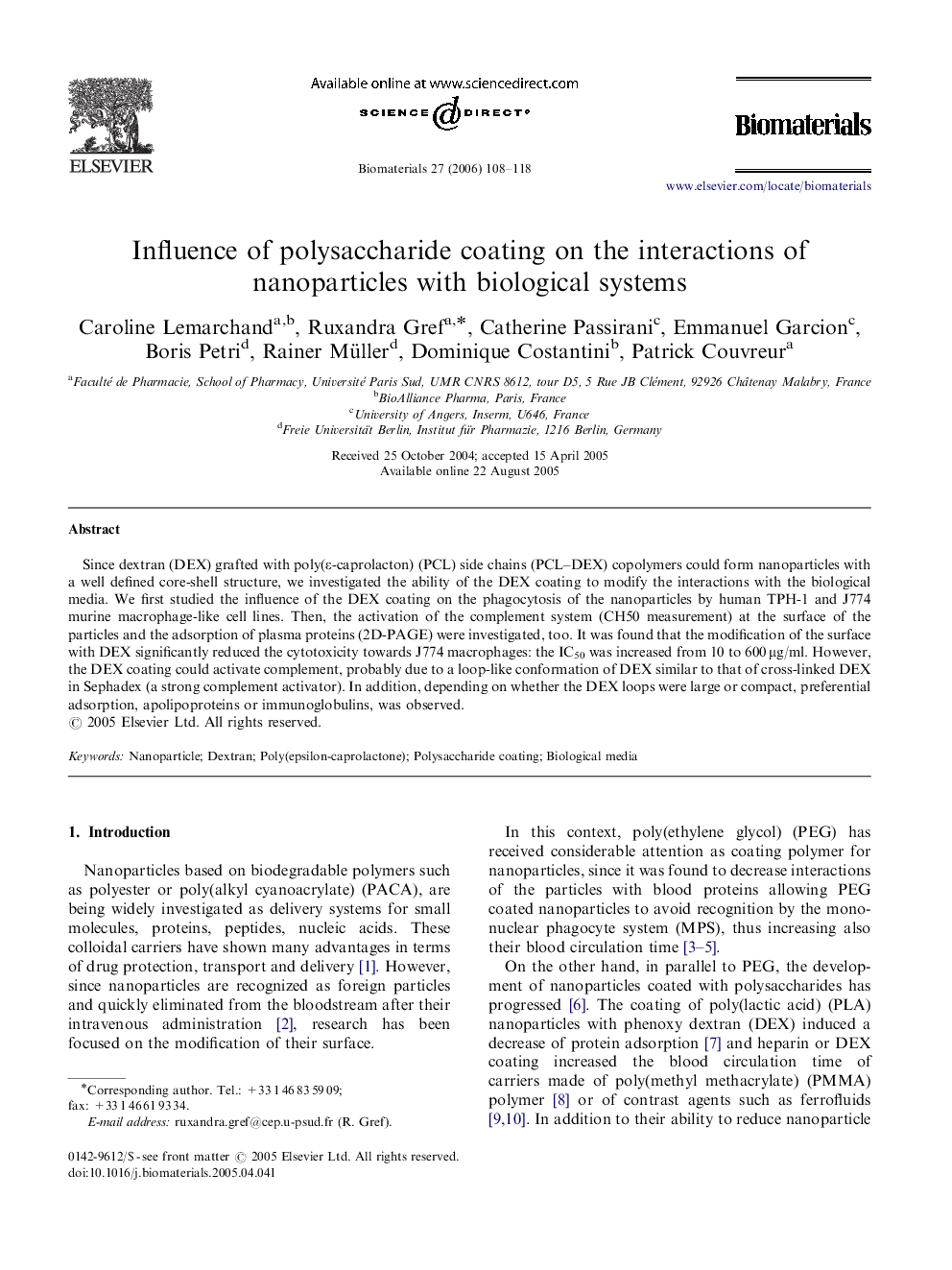| Article ID | Journal | Published Year | Pages | File Type |
|---|---|---|---|---|
| 11861 | Biomaterials | 2006 | 11 Pages |
Since dextran (DEX) grafted with poly(ε-caprolacton) (PCL) side chains (PCL–DEX) copolymers could form nanoparticles with a well defined core-shell structure, we investigated the ability of the DEX coating to modify the interactions with the biological media. We first studied the influence of the DEX coating on the phagocytosis of the nanoparticles by human TPH-1 and J774 murine macrophage-like cell lines. Then, the activation of the complement system (CH50 measurement) at the surface of the particles and the adsorption of plasma proteins (2D-PAGE) were investigated, too. It was found that the modification of the surface with DEX significantly reduced the cytotoxicity towards J774 macrophages: the IC50 was increased from 10 to 600 μg/ml. However, the DEX coating could activate complement, probably due to a loop-like conformation of DEX similar to that of cross-linked DEX in Sephadex (a strong complement activator). In addition, depending on whether the DEX loops were large or compact, preferential adsorption, apolipoproteins or immunoglobulins, was observed.
